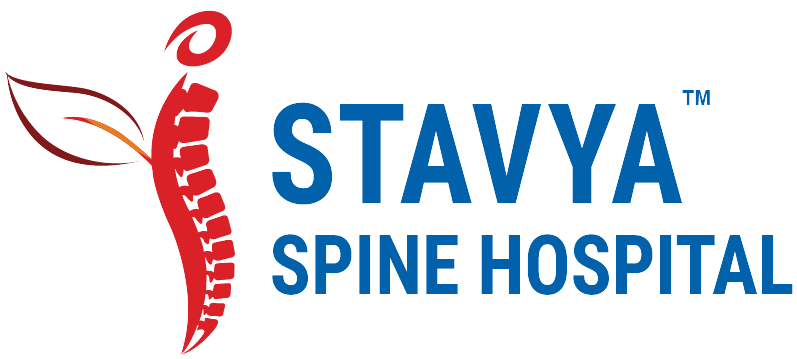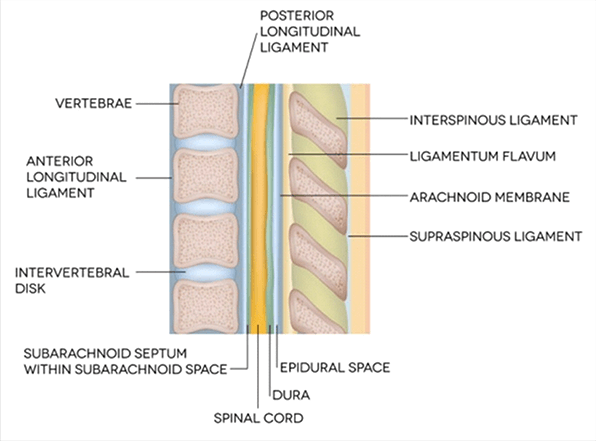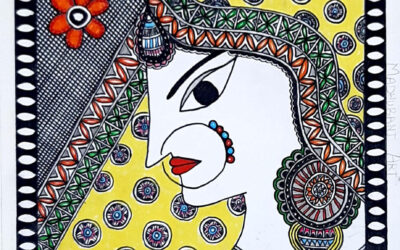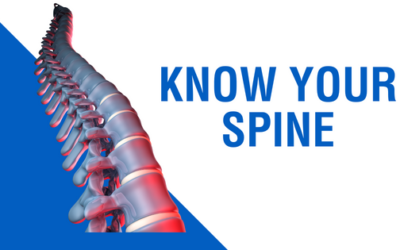Overview
The spine provides support for our body, allowing us to sit and stand upright, bend, and twist, while protecting the spinal cord from injury. It is made up of 33 bones, multiple muscles, joints, ligaments, the spinal cord and the nerves. Any injury or disease affecting any of these structures can cause pain or dysfunction of the spine.
Spinal curves
When a child is born, his spine has a single ‘C’ shaped curve. As the child starts lifting his head and gains neck control, concavity in the cervical (neck) region develops. When the child starts walking, another concavity develops in the lumbar (low back) region. Thus, the adult spine has a natural ‘S’ shaped curve when viewed from the side. The curves work like a coiled spring to absorb shock, maintain balance, and allow range of motion throughout the spinal column. The spinal curves are maintained by back and abdominal muscles. Excessive body weight or weak muscles can disturb the spine alignment and lead to increased stress on the spine.
Vertebrae
There are 33 vertebrae which are interconnected like the bogies of a train. These can be divided into five regions from neck down to the pelvis as cervical, thoracic, lumbar, sacrum and coccyx.
Cervical (neck) – the main function of the cervical spine is to support the weight of the head (about 10 pounds). The seven cervical vertebrae are numbered C1 to C7. The neck has the greatest range of motion because of two specialized vertebrae that connect to the skull. The first vertebra (C1) is the ring-shaped atlas that connects directly to the skull. This joint allows for the nodding or “yes” motion of the head. The second vertebra (C2) is the peg-shaped axis, which has a projection called the odontoid, that the atlas pivots around. This joint allows for the side-to-side or “no” motion of the head.
Thoracic (mid back) – the main function of the thoracic spine is to hold the rib cage and protect the heart and lungs. The twelve thoracic vertebrae are numbered T1 to T12. The range of motion in the thoracic spine is limited.
Lumbar (low back) – the main function of the lumbar spine is to bear the weight of the body. The five lumbar vertebrae are numbered L1 to L5. These vertebrae are much larger in size to absorb the stress of lifting and carrying heavy objects.
Sacrum – the main function of the sacrum is to connect the spine to the hip bones (iliac). There are five sacral vertebrae, which are fused together. Together with the iliac bones, they form a ring called the pelvic girdle.
Coccyx region – the four fused bones of the coccyx or tailbone provide attachment for ligaments and muscles of the pelvic floor
Intervertebral discs
Vertebral bodies are stacked on each other joined by intervertebral discs, which acts like a cushion. Discs are made up like car tyres. The outer ring (annulus) is formed by fibrous bands, which join the bodies of adjacent vertebrae. The inner part of disc (nucleus) is filled with gel like fluid. The nucleus of the disc absorbs water during night when we lie down and releases water when we are active in the day time. It is imperative to be active for proper functioning of the disc. Ageing of the intervertebral discs starts as early as 25 years of age. With ageing disc, the disc becomes more prone to damage when subjected to physical stress, thus leading to disc prolapse or stenosis.
Vertebral arch and spinal canal
On the back of each vertebra are bony projections that form the vertebral arch. The arch is made of two supporting pedicles and two laminae. The hollow spinal canal contains the spinal cord, fat, ligaments, and blood vessels. Under each pedicle, a pair of spinal nerves exits the spinal cord and pass through the intervertebral foramen to branch out to your body. Surgeons often remove the lamina of the vertebral arch (laminectomy) to access the spinal cord and nerves to treat stenosis, tumors, or herniated discs.
Seven processes arise from the vertebral arch: the spinous process, two transverse processes, two superior facets, and two inferior facets
Facet joints
The facet joints connect one vertebral body with another and allow movement of the back. Each vertebra has four facet joints, one pair that connects to the vertebra above (superior facets) and one pair that connects to the vertebra below (inferior facets)
Ligaments
The ligaments are strong fibrous bands that hold the vertebrae together, stabilize the spine, and protect the discs. The three major ligaments of the spine are the ligamentum flavum, anterior longitudinal ligament (ALL), and posterior longitudinal ligament (PLL). They prevent excessive movement of the vertebral bones. The ligamentum flavum attaches between the lamina of each vertebra.
Spinal cord
The spinal cord is a bundle of nerves carrying signals from brain to all four limbs as well as to control bowel and bladder function. The spinal cord is protected in a bag of water, covered with meninges. Any damage to the spinal cord can result in a loss of sensory and motor function below the level of injury.
Spinal nerves
Thirty-one pairs of spinal nerves branch off the spinal cord. The spinal nerves act as “telephone lines,” carrying messages back and forth between your body and spinal cord to control sensation and movement. The spinal nerves are numbered according to the vertebrae above which it exits the spinal canal. The 8 cervical spinal nerves are C1 through C8, the 12 thoracic spinal nerves are T1 through T12, the 5 lumbar spinal nerves are L1 through L5, and the 5 sacral spinal nerves are S1 through S5. There is 1 coccygeal nerve. The spinal nerves innervate specific areas and form a striped pattern across the body called dermatomes. Any damage to the nerves is thus reflected as pain along the distribution of the nerve. So the disc prolapse may be there at the low back, but the nerve root getting compressed will result in pain at the calf (sciatica).



